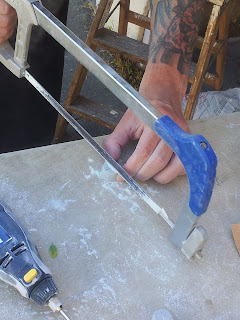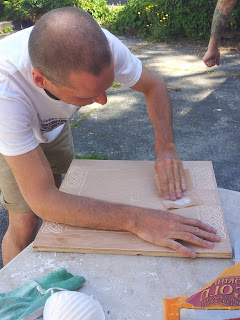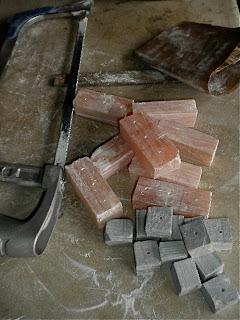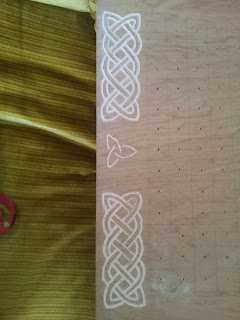Our original research questions in relation to this project were along these lines:
- Who was using the games for which there is archaeological evidence?
- Is the material used for the game pieces linked to status? (i.e. Are more valuable materials associated with higher ranking individuals?)
- Can we infer social standing of individuals based upon the material used for game pieces, where such pieces exist in the archaeological record as grave good?
One of the few intact extant medieval tafl boards
As it is, the actual project of making a tafl board and game pieces did not go a very long way in answering these questions. However, we do feel that our original hypothesis that the game pieces were considered to be of much greater value than the gameboards themselves is borne out, based on the amount of work involved and the value of the materials for making the pieces vs. the board. As well, it seems likely the reason so few gameboards exist in the archaeological record relative to game pieces is the result of a combination of factors: the greater durability of the materials used for pieces (ivory, stone, glass, etc) vs. gameboards (usually wood, but also whatever was at hand, such as pieces of slate), but also, importantly, that the pieces were considered of much greater value (because of materials and labour involved in making them), as evinced by their presence in burial finds.
Medieval glass tafl game pieces




.jpg)

















.jpg)

















